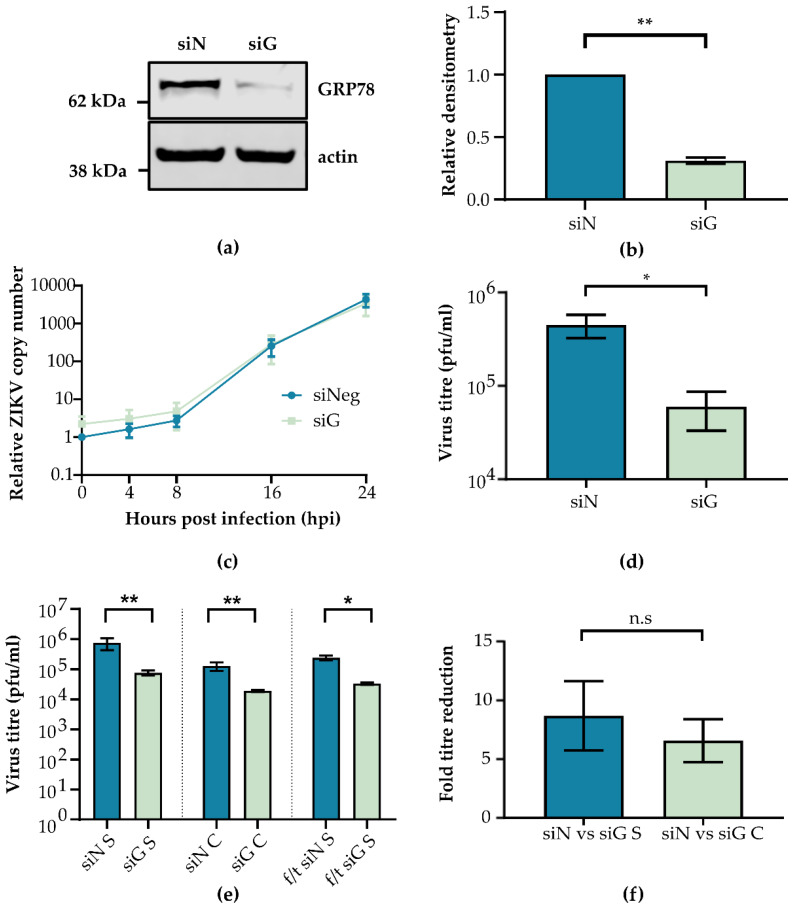Figure 3.
GRP78 depletion reduces ZIKV infectious particle release. A549 cells were treated with siRNA targeting GRP78 (siG) or negative control (siN) for 72 h. (a) A representative Western blot of triplicate repeats is shown. (b) Triplicate Western blots were analysed for GRP78 densitometry relative to actin levels to measure protein expression. (c) Cells treated with siRNA were infected with ZIKV PE243 at MOI 0.1. RNA was extracted at 4, 8, 16, and 24 h post infection. Viral RNA copy number was measured by RT-qPCR relative to a GAPDH control and normalised to viral RNA detected at 0 h in the siN sample. (d) Supernatant was harvested at 24 h post infection, and viral titre was measured via plaque assay. (e) Following siRNA treatment, cells were infected with ZIKV PE243 at MOI 5 for 24 h. Supernatant was harvested from siN and siG cells, and the titre was calculated for untreated supernatants (siN S and siG S) and freeze/thaw (f/t) supernatants (f/t siN S and f/t siG S). Monolayers corresponding to siN or siG supernatants were subject to 3× f/t cycles, and the titre was calculated (labelled siN C and siG C). (f) The reduction in titre between siN treated cells and siG shown in (e) is plotted, where siN vs. siG S represents samples taken from the supernatant, and siN vs. siG C is intracellular virus. The mean fold-reduction was calculated from three independent experiments, and error bars show the standard error of the mean. (a–f) Experiments were performed in triplicate, and the mean and the standard error of the mean are plotted. An unpaired Student’s t-test with Welch’s correction was used to determine statistical significance where n.s = not significant, * p-value < 0.05, ** p-value < 0.01.

